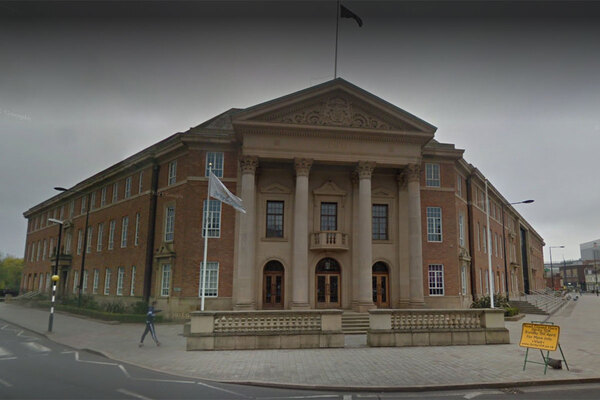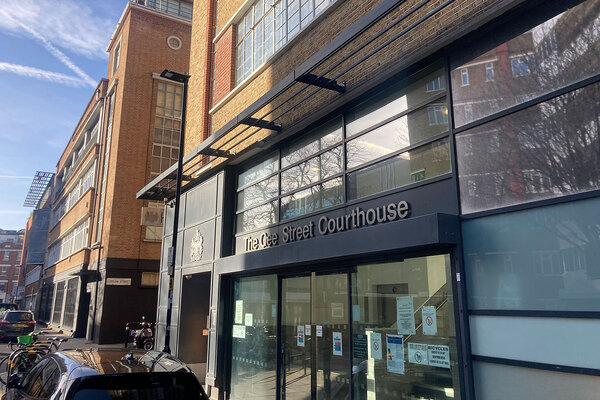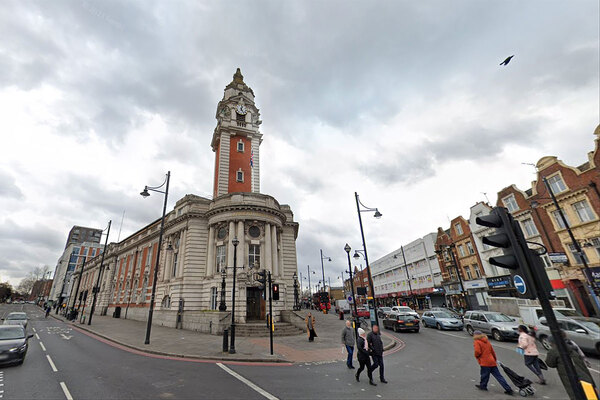 Jules Birch
Jules BirchRemembering Cathy
 Jules Birch
Jules BirchCathy Come Home has lost none of its power as it nears its 50th anniversary. As everyone in housing knows, the classic BBC play brought homelessness to national attention. Shelter was founded a few days after its first transmission, Crisis a year later and many housing associations at around the same time.
There are currently three different ways to watch again: the original BBC play by Jeremy Sandford and Ken Loach is on iPlayer, a stage version by Cardboard Citizens will be on tour over the Autumn and Winter and its production is also available on YouTube. Housing associations with a connection have also formed the Homes for Cathy group to raise awareness.
Watching the original for the first time in years, it was obvious that Cathy is still just as hard hitting as an exposé of what happens when a family slip through the safety net. Her harrowing descent from flat to squat to traveller camp to hostel was watched by 12m people in 1966 (a quarter of the population) and they got the message that housing matters.
In that final scene at Liverpool Street station, Cathy’s kids join the other 4,000 that the commentary tells us are taken into care each year because their parents are homeless.
Little wonder that Cathy Come Home was such a sensation at the time – and why it continues to resonate today. Housing benefit and the homelessness legislation ought to prevent the same thing happening to families now but with the safety net at breaking point it’s not hard to find contemporary parallels.
And far from heeding the programme’s message about the need for more affordable homes we seem to have gone backwards. Housing was a huge political issue even before Cathy Come Home was first shown in November 1966. Rather than setting vague ambitions of 200,000 or 300,000 homes a year, the main parties had been competing to set much bigger targets at the general election eight months before.
The Conservative manifesto pledged: ‘We will raise the housing target to an annual rate of 500,000 homes by the end of 1968’.
The winning Labour manifesto said: ‘We have announced - and we intend to achieve - a Government target of 500,000 houses by 1969/70. After that we shall go on to higher levels still. It can be done - as other nations have shown. It must be done - for bad and inadequate housing is the greatest social evil in Britain today.’
The 500,000 target never was achieved – and is also a little deceptive because it was for the UK as a whole and a gross figure that does not reflect the fact that many more homes were demolished in the 1960s. Output instead rose from 383,000 in 1965 to a mere 426,000 in 1968.
However, the focus on quantity and targets (brought into focus by the Ronan Point disaster in 1968) was understandable in the face of the housing shortage portrayed in Cathy Come Home. The commentary tells us of 200,000 more families than houses in London, of 60,000 single people living without sinks or stoves and seven London boroughs where more than one in ten families are overcrowded, living more than 1.5 people to a room.
‘What’s needed is a government that realises this a crisis and treats it as such,’ says one of the voices off camera, proving that nothing much has changed at least on this.
But two other things really struck me as I watched again. The first is the way that bureaucracies operate according to their own logic and anyone who disputes it becomes a ‘troublemaker’.
The way that the hostel manager tells Cathy that she’s lucky because other councils would take her children into care captures the bureaucratic logic perfectly, as does his comment when her final three months run out: ‘You’ve had your chance. We’re not interested in you now, it’s the kids we’re worried about.’
And there’s the classic response when Cathy asks why they can’t get a council house: ‘If we rehoused homeless families people would think they jumped the queue so we can’t do it.’
Councillors in Birmingham were incensed by the portrayal of their hostels and their policy of separating husbands and wives in the play. But conditions in those hostels changed within days of transmission. It took another 11 years to change the homelessness legislation.
Local authorities and housing associations face the same sort of issues now. Financial factors constrain decisions about homelessness, temporary accommodation and out of area placements just as landlords look at the bottom line when it comes to allocating homes to tenants whose benefits are being cut. Will you house a couple who are under 35 or whose benefits are about to be capped?
Whether you call it bureaucratic or ‘business’ logic, it can take on a life of its own unless the people applying it constantly question it. Sometimes they need reminding.
The second thing that struck me was a scene early in the play where things are looking (very briefly) optimistic. Before Cathy gets pregnant and Ray loses his job, they’re living in a modern flat (‘a place like that even smells different, must be the central heating’) and they even think about buying a house. Between them they’re earning £35 a week as a van driver and a waitress.
Cathy goes to see what I think is an estate agent (but could be a building society). The man tells them there are a number of properties at the lower end of the price range from £3,500 to £5,000 (or cheaper if you buy one in a bad condition). The barrier to them buying is not the price but the deposit: they have £100 saved but the building society will want at least a 10% deposit; and for homes that need work it will insist that you spend at least £700 doing them up as a condition of the loan. ‘The cheapest houses are bought by the people with the money in hand to improve them,’ says the man.
So 50 years ago a low-income couple could buy a house in London for two to three times their joint income if they could raise a deposit. The average price of a house in the UK was £3,500 in 1966 and while prices were rising it wasn’t until the early 1970s that Britain experienced its first post-war boom. It was still possible to save for a deposit without the price accelerating away from you.
True, the supply of new homes of all kinds was booming in 1966 but the housing crisis at the time was seen as being about an acute shortage of homes.
Fifty years later, the average house price is 60 times higher for the UK and off the scale for London. What’s happened since has been about much more than just the supply of new homes.







